Can running shoes be used for walking?
We speak to a footwear expert and ask can running shoes be used for walking?
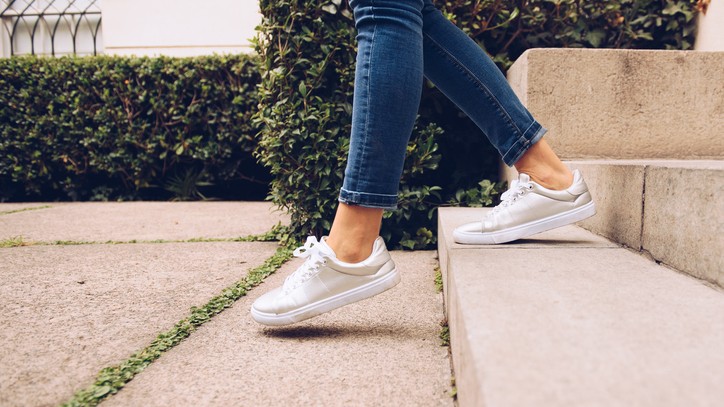
They may make us run faster and have a myriad of biomechanical features to support our foot landing – but when we decide to take things slower, can running shoes be used for walking?
Running and walking involve different types of movement. When walking one foot always remains on the ground but during running there is a moment when both feet are in the air. So deciding on the best shoes for walking may not be as simple as putting on an old pair of running shoes.
A study of the differences in muscle function during walking and running published in the Journal of Biomechanics concluded that running produced greater power output in certain leg muscles – specifically the soleus, hip and knee extensors. But all other muscle groups distributed mechanical power and provided support and forward propulsion in a similar way in walking and running. There appears to be some overlap in the way in which muscles work when we walk and run.
We spoke to Matt Hart, a sports podiatrist and clinical lead MSK podiatrist at ACE Feet in Motion, to find out whether running shoes can be used for walking.
What are the main differences between walking shoes and running shoes?
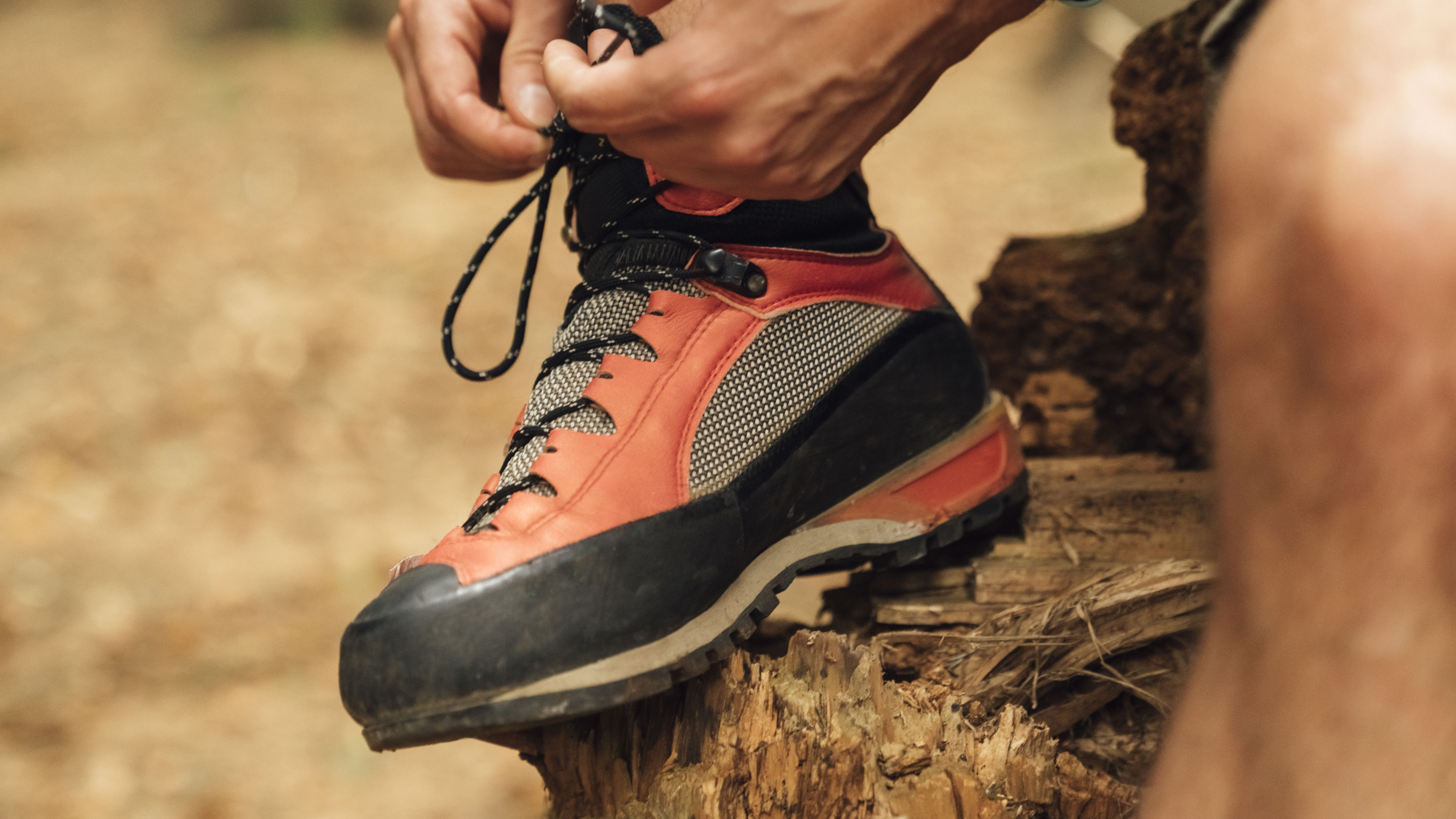
Hart says that it's important to understand the difference between walking/hiking shoes and everyday trainers.
"In general walking/hiking shoes have a more supportive and protective upper layer to protect the foot and ankle from rain, stones, mud, brambles and twigs when walking," he explains. The upper can be both ankle- and above-ankle height to provide more or less support around that region. The midsole is also harder and more durable and the tread is made up of deeper lugs for greater grip on muddy or rocky terrain.
By comparison, general trainers, such as Skechers, tend to feel more comfortable due to their soft, cushioned midsole and inner shoe liner. However, this softness and flexibility can cause issues because they do not provide support around the foot and ankle. Hart says that these types of shoes can actually increase the stress on joints and soft tissue, depending on a person’s biomechanics or injuries.
Sizing is also often a challenge with these types of shoes because they are usually only available in full size rather than half sizes and only a single width fitting. This reduces the ability for correct fitting and room to accommodate natural foot swell while walking.
- Related: Does walking build muscle?
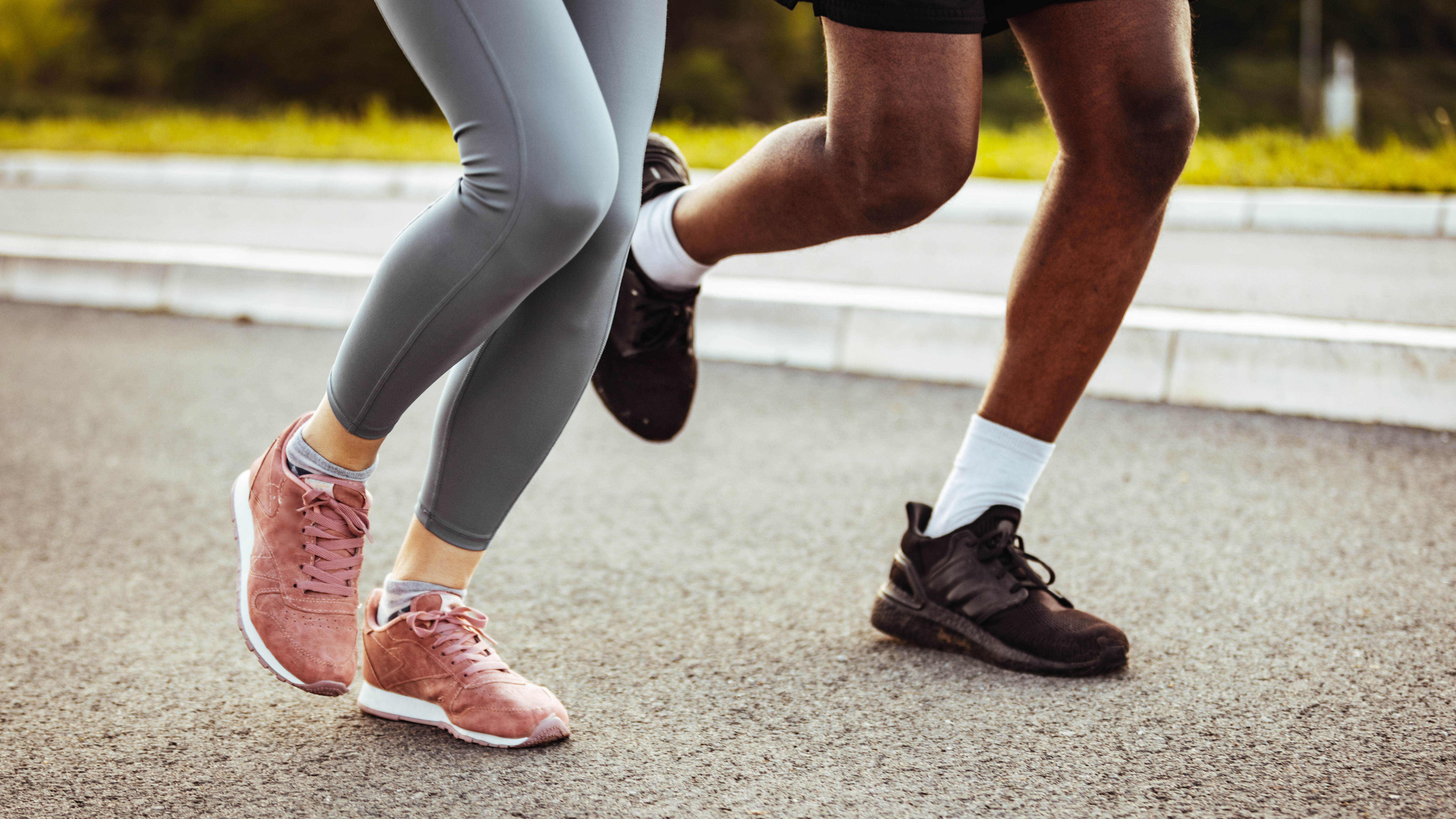
When it comes to running shoes, the design is different to hiking and everyday trainers. A running shoe has a more breathable upper layer that helps prevent feet becoming hot and a lighter and flexible upper, which is a one piece, reducing the risk of rubbing or irritation from seams. They come in half sizing and a number of width fittings – making them more bespoke to each wearer.
- Read more: How running shoes should fit
Running shoes have a number of different characteristics, such as supportive features (dual density medial posting, guide rails, flaring of the midsole, reinforced heel counters, increased longitudinal bending stiffness). Some also include forefoot rockers that can help people with reduced range of motion in their big toe joint, reduced ankle dorsiflexion, achilles tendon and plantar heel pain issues.
Cushioning in a running shoe is also better because it is designed to reduce shock from much-higher impact loads than walking, therefore the shoes are more likely to last longer
Running shoes also vary in heel to toe height to address ankle issues (a deeper drop of 10mm to 12mm) or knee pain (4 to 0mm). This is because this differential may influence the stress placed on different parts of the lower limb.
"Cushioning in a running shoe is also better because it is designed to reduce shock from much-higher impact loads than walking, therefore the shoes are more likely to last longer," says Hart. Running shoes also tend to have an outsole like a walking/hiking shoe or boot, which provides better traction and durability compared with general trainers.
Can you walk in running shoes? What are the risks?
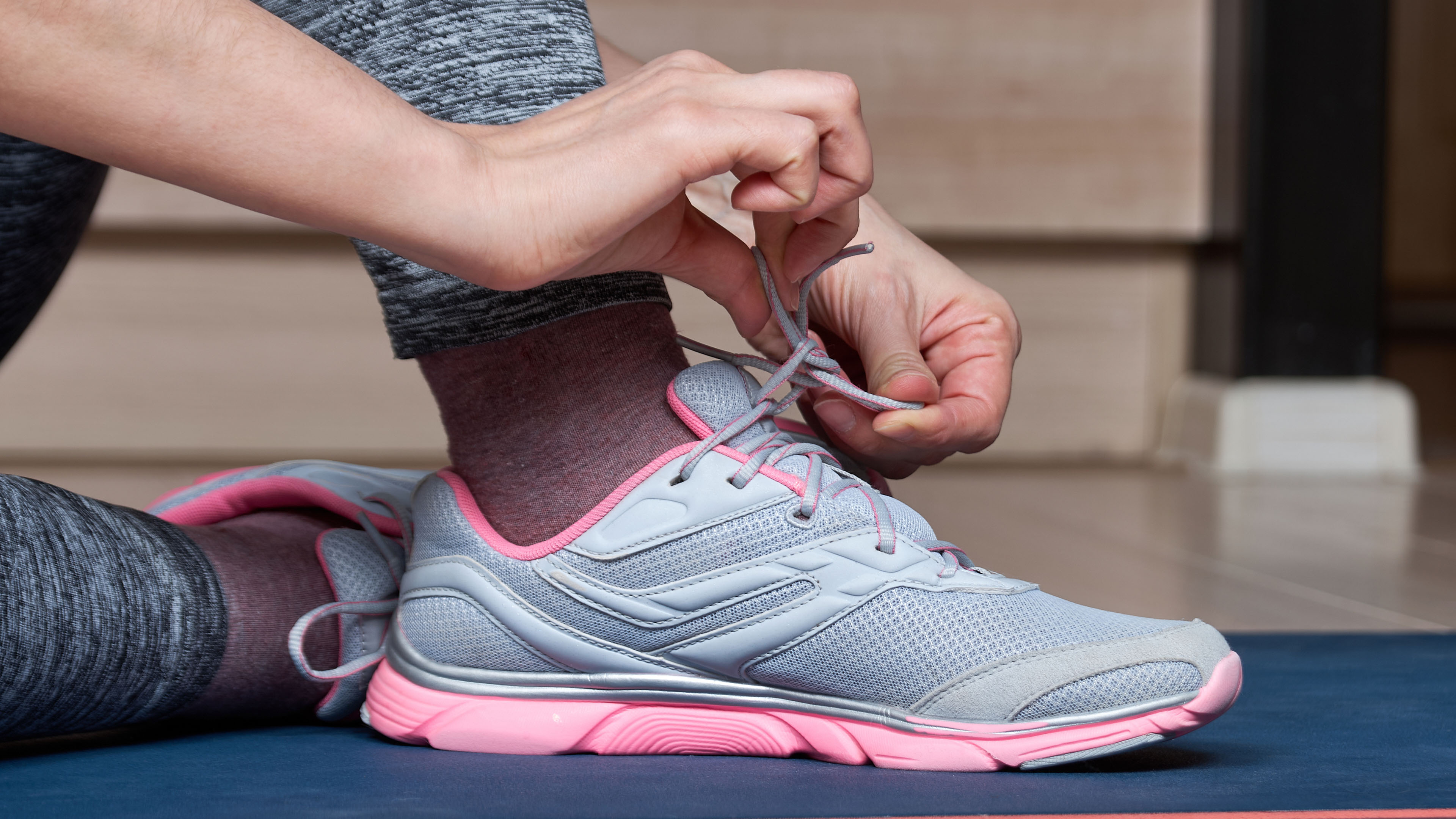
The answer is yes. And it is pretty good for you. It is best to wear road shoes for walking on sidewalks and smooth surfaces but switch to trail shoes if walking off-road or on muddy ground. That said, the stiffness of a walking/hiking shoe would provide better support and protection overall than a running trail shoe.
Using a running shoe for everyday walking on sidewalks or the best walking treadmills is actually likely to be more comfortable and provide a better fit than general trainers because you can get a more specific width and size.
Research has shown that heel cushioning during running and walking is influenced by shock absorption and possibly rebound. A paper in Proceedings of the Human Factors and Ergonomics Society Annual Meeting concluded "a good running shoe can in most cases satisfy biomechanical needs during walking".
The only real risk of walking in running shoes is slipping over if the lugs are not grippy enough off-road or using old shoes with degraded foam. Hart says that EVA foam in running shoes degrades quickly even if the shoes have not been worn. A new pair sat on a shelf in the box will naturally degrade. If you are going to walk in running shoes the newer the better.
What should you look for in a walking shoe?
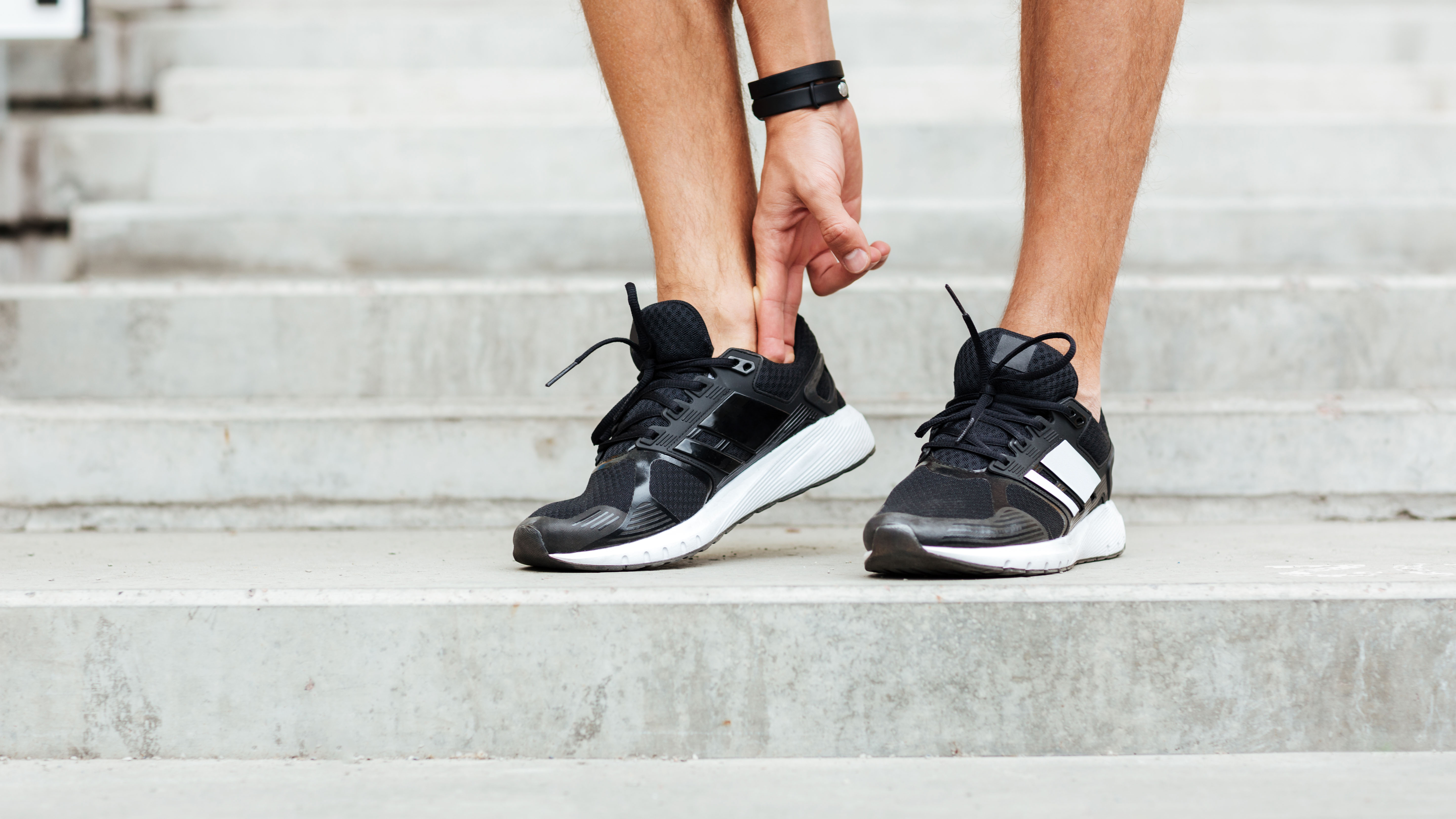
It's important to learn how running shoes should fit. Many people think the softer a shoe feels the more cushioning it has, and therefore the better the shoe is at reducing impact. The opposite is true. In softer shoes the ankle stiffens, increasing the loading rate at foot strike, which can increase the impact and stress through the lower limb.
As with any shoe, the most important thing to look for is comfort and fit. "The shoe must be comfortable when your foot is in the shoe. There should be no areas of bulging, which would indicate the shoe is too narrow for the foot," says Hart. He also says that there should be half to a full thumbs width at the end to allow for expansion and swelling and the heel should not slip.
Also think about the surfaces you will be walking on. For road and sidewalk walking, running shoes are more beneficial than hiking boots or an everyday trainer. But if you are hitting the trails then consider a hiking shoe or a trail running shoe if you want something lighter.
Further reading
Perceived differences in running and walking shoes
Differences in muscle function during walking and running at the same speed
Sign up for the Live Science daily newsletter now
Get the world’s most fascinating discoveries delivered straight to your inbox.
Lily Canter is a freelance money, health and lifestyle journalist with more than 20 years' experience. She writes about fitness for Fit+Well, Tom's Guide, T3, South China Morning Post, Runner's World and Trail Running magazine. She focuses on personal finance for Yahoo! Finance UK, Metro, The Guardian, and loveMONEY. In her spare time she is an ultra-runner, canicrosser and UK Athletics running coach. She also co-hosts the award-winning podcast Freelancing for Journalists.











